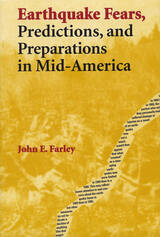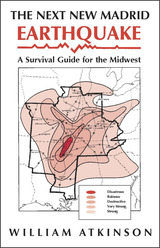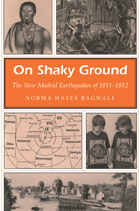
The New Madrid Seismic Zone (NMSZ) generated the strongest earthquakes ever observed in the lower forty-eight states in 1811 and 1812. And the region is overdue for another damaging quake. When self-proclaimed climatologist lben Browning predicted that a major earthquake would shatter the Heartland on 2 or 3 December 1990, many living within reach of the New Madrid fault zone reacted with varying combinations of preparation and panic.
John Farley’s study reports the results of four surveys conducted in the NMSZ both before and after the quake prediction. Thus, Farley notes the level of awareness and preparation at the height of the Browning-induced scare and shows to what extent earthquake awareness and preparedness were sustained in this region after the most widely publicized prediction in recent history proved baseless. All four surveys offer important insights into what people believe about earthquake risk in the NMSZ, what they know about earthquakes, what specific actions they have—and have not—taken in preparation for earthquakes, and what they think a severe quake would do to their neighborhoods.
Farley is the first researcher to study the response to an earthquake prediction while the prediction remained in effect and to continue the inquiry after the date covered by the prediction had passed. He is also the first researcher to look at earthquake awareness and preparedness in the NMSZ over an extended period of time.

Scientists who specialize in the study of Mississippi Valley earthquakes say that the region is overdue for a powerful tremor that will cause major damage and undoubtedly some casualties.
The inevitability of a future quake and the lack of preparation by both individuals and communities provided the impetus for this book. Atkinson brings together applicable information from many disciplines: history, geology and seismology, engineering, zoology, politics and community planning, economics, environmental science, sociology, and psychology and mental health to provide the most comprehensive perspective to date of the myriad impacts of a major earthquake on the Mississippi Valley.
Atkinson addresses such basic questions as "What, actually, are earthquakes? How do they occur? Where are they likely to occur? Can they be predicted, perhaps even prevented?" He also addresses those steps that individuals can take to improve their chances for survival both during and after an earthquake.

Although most Americans associate earthquakes with California, the tremors that shook the Mississippi valley in southeast Missouri from December 16, 1811, through February 7, 1812, are among the most violent quakes to hit the North American continent in recorded history. Collectively known as the New Madrid earthquakes, these quakes affected more than 1 million square miles. By comparison, the 1906 San Francisco earthquake affected only 60,000 square miles, less than one-sixteenth the area of the New Madrid earthquakes.
Scientists believe that each of the three greatest tremors would have measured more than 8.0 on the Richter scale, had that measuring device been in place in 1811. Vibrations were felt from the Rocky Mountains to the Atlantic coast and from Mexico to Canada. The quake zone was in constant movement during this period. Five towns in three states disappeared, islands vanished in the Mississippi River, lakes formed where there had been none before, and the river flowed backward for a brief period.
Providing eyewitness accounts from people both on the land and on the river, Bagnall captures the fears of the residents through their tales about the smells and dark vapors that filled the air, the cries of the people, the bawling of animals, and the constant roar of the river and its collapsing banks. On Shaky Ground also traces the history of the founding of New Madrid and considers the impact of the earthquakes on population and land in southeast Missouri. Predictions for future earthquakes along the New Madrid fault, as well as instructions on preparing for and surviving a quake, are also included.
Informative, clearly written, and well illustrated, On Shaky Ground will be of interest to all general readers, especially those interested in earthquakes or Missouri history.
READERS
Browse our collection.
PUBLISHERS
See BiblioVault's publisher services.
STUDENT SERVICES
Files for college accessibility offices.
UChicago Accessibility Resources
home | accessibility | search | about | contact us
BiblioVault ® 2001 - 2024
The University of Chicago Press









